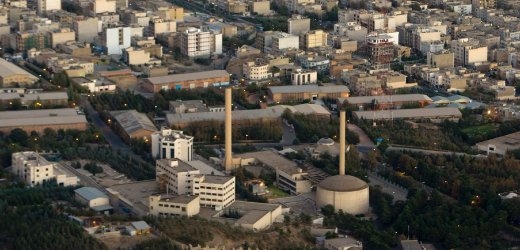Part 1 of 2 parts
There has been a great deal of coverage in the media about the Iran nuclear program and the Iran deal that has just been approved by Congress. Today, I will delve into the history of the Iranian nuclear program.
The Iran nuclear program began in 1957. The U.S. provided Iran with a five megawatt research reactor. The reactor was built on the grounds of Tehran University and the U.S. provided weapons-grade enriched uranium to fuel it. The reactor is still operating. It was constructed as part of U.S President Eisenhower's Atoms for Peace program. The idea was that if the U.S. helped other countries develop domestic nuclear power programs, those countries might be less inclined to work on the development of nuclear weapons. (It is interesting to note that the legally elected democratic government of Iran was overthrown in 1953 by Iranians backed by the U.K. and the U.S. The new government was led by Mohammad-Rezā Shāh Pahlavi as absolute monarch with U.K. and U.S. support until the revolution in 1979.)
With the energy crisis of the early 1970s and the rise in oil prices, money flooded into oil rich nations such as Iran. As one result of the influx of capital, Iran expanded its nuclear program. Iran gave MIT twenty million dollars to train Iranian nuclear scientists. Most of these Iranian students returned to Iran and became important members of the Iranian nuclear program.
Following these developments, some members of the U.S. government became concerned that Iran might be developing nuclear weapons and tried to find ways to curtail Iranian nuclear research. The Shah's government responded that Iran had every right as a sovereign nation to pursue nuclear research. The Shah threatened to look for other vendors and not use U.S. technology in his research program. Iran wound up buying nuclear power plants from West Germany and France.
Then the Iranian Revolution of 1979 happened and the Shah's government was toppled. The religiously oriented government that replace the previous regime was very hostile towards the U.S. Their initial reaction to the Iranian nuclear program was negative. It was seen as part of the U.S. meddling in the affairs of Iran. The reactor building program was abandoned. The Ayatollah Khomeni who was the new ruler of Iran said that the unfinished nuclear power plants in Bashehr, Iran should be used to store wheat.
Soon after the Revolution, a war broke out between Iraq and Iran in 1980. Iraq struck first in fear of Iranian support for the Shia minority in southern Iraq. One of the tactics employed by Iraq was the repeated bombing of the Bashehr nuclear facility although it was not operational. The war dragged on for 8 years and was costly and destructive to both sides. The damage in Iran included the loss of power generating capacity. Whether related to the possibility of deterring future attacks or in order to provide the much needed electricity, the Iranian leadership decided to resurrect the Iranian nuclear program following the end of the war in 1988.
During the 1990s, Israel repeatedly warned that Iran was making progress towards a nuclear bomb. Israel and Iran were enemies and Israel feared that they would be the target of an Iranian nuclear weapon. The U.S. had imposed trade sanction on Iran following the Revolution in 1979 and the U.S. expanded sanctions in 1995 over concerns with the Iranian nuclear program. The Iranian nuclear program which had been symbol of Western "toxic" influence in pre-Revolutionary Iran, now became a symbol of defiance of Western Influence and an icon of Iran national pride.
(Please see Part 2)
Tehran University Research Reactor:
